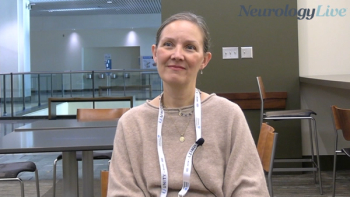
R-CHOP is standard of care for advanced DLBCL patients
Rituximab (Rituxan) plus CHOP (cyclophosphamide, doxorubicin, vincristine, prednisone) is the standard induction therapy for patients with advanced-stage diffuse large B-cell lymphoma, including both elderly and younger patients.
SAN FRANCISCO-Rituximab (Rituxan) plus CHOP (cyclophosphamide, doxorubicin, vincristine, prednisone) is the standard induction therapy for patients with advanced-stage diffuse large B-cell lymphoma, including both elderly and younger patients.
"In every parameter of note, R-CHOP produces major benefit in these patients," said Richard I. Fisher, MD, professor of medicine and director of the James P. Wilmot Cancer Center at the University of Rochester Medical Center.
In a presentation at the 3rd Annual Oncology Congress, Dr. Fisher pointed to the phase III GELA (Groupe d'Etude des Lymphomes de l'Adulte) trial, which compared R-CHOP with CHOP alone in elderly DLBCL patients (Coiffier et al: N Engl J Med 346:235-242, 2002).
At a median follow-up of 11.5 months, overall survival was 83% in the R-CHOP group vs 68% with CHOP alone (P < .001). Event-free survival (68% vs 49%, P < .0005) and complete response rates (76% vs 60%, P < .004) were also significantly higher among the R-CHOP patients. There was no clinically relevant increase in adverse events with R-CHOP.
Dr. Fisher also noted that results have been stable over the years, according to 3- and 5-year follow-up analyses.
A phase III study by Habermann and colleagues of patients 60 years of age or older found a 3-year failure-free survival rate of 53% with R-CHOP, compared with 46% for CHOP alone (P = .04), with a median follow-up of 3.5 years (J Clin Oncol 24:3121-3127, 2006). (This study also included a maintenance phase, discussed below.)
The MInT study
Dr. Fisher also highlighted the MInT Trial (MabThera International Trial), which randomized younger patients (aged 18 to 60) with good prognosis stage II-IV DLBCL (or stage I with bulk) to R-CHOP or CHOP alone. With a median follow-up of 23 months, overall survival was 95% for R-CHOP vs 86% for CHOP alone (P = .0002).
"We've yet to see a randomized study in which adding rituximab doesn't produce benefit," Dr. Fisher said. "CHOP-Rituximab is standard initial therapy for all patients with advanced-stage diffuse large B-cell lymphoma."
The question remains whether maintenance rituximab could further benefit patients after R-CHOP. Dr. Fisher answers, "Not at this time." He cited Morrison et al (ASCO 2007 Annual Meeting, abstract 8011, an update of Habermann et al), which found no difference in 6-year overall survival in patients aged 60 and over who received maintenance rituximab or observation after responding to initial CHOP or R-CHOP.
The median failure-free survival after CHOP was significantly better with rituximab maintenance (5.2 years vs 1.6 years for observation, P = .004), but did not differ significantly for the patients who had already received rituximab in their induction regimen (R-CHOP) (5.6 years vs 5.4 years, P = .50).
Adding other agents
Can standard R-CHOP be improved? Dr. Fisher cited several ongoing trials that may answer that question, including SWOG 0515, a phase II study of R-CHOP plus bevacizumab (Avastin) in patients over age 60 with advanced-stage DLBCL, and the phase II SWOG-0433 of R-CHOP plus I-131 tositumomab (Bexxar) in the same patient group.
He also noted an ongoing GELA study (LNH 03-6B) of dose-escalated R-CHOP. Patients aged 66 to 80 are being randomized to R-CHOP 14 or standard R-CHOP 21 with or without an erythropoietin-stimulating agent.
Newsletter
Stay at the forefront of cutting-edge science with CGT—your direct line to expert insights, breakthrough data, and real-time coverage of the latest advancements in cell and gene therapy.











































